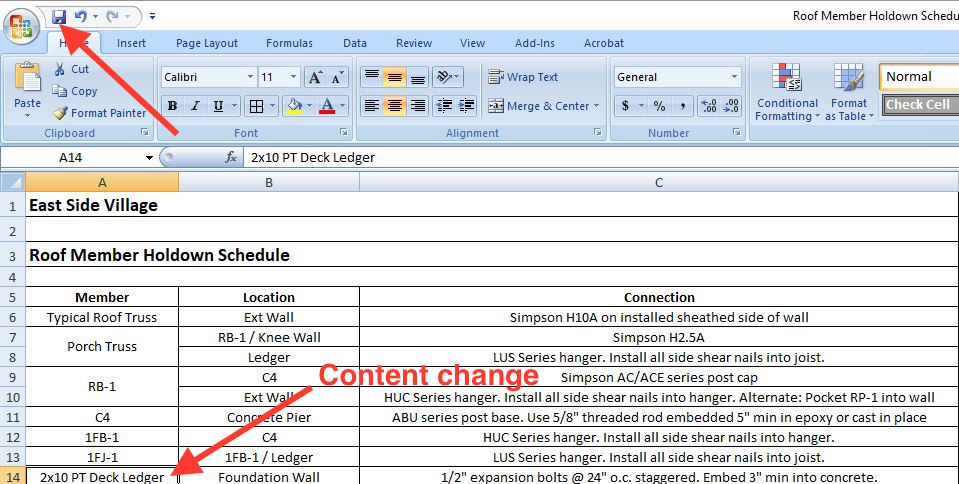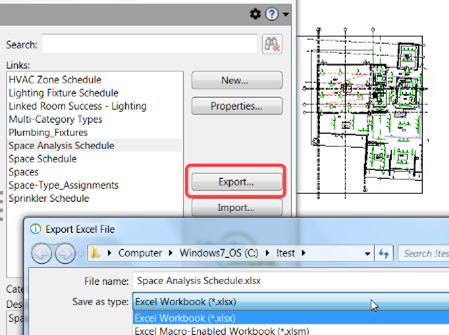Revit Tool to Equip Your Structure Info Modeling
Wiki Article
Grasping the Art of Data Combination: Just How to Seamlessly Import Excel Record Into Revit
In this short article, we will direct you with the process of grasping the art of information combination. Obtain prepared to prepare your Excel information easily and follow our detailed overview to import documents right into Revit. With our finest methods, you'll accomplish information combination success in no time.Comprehending the Value of Data Combination in Revit
Understanding the significance of information assimilation in Revit is important for seamless importing of Excel files. When you integrate information from Excel right into Revit, it enables you to effectively update and manage information throughout the entire task. This assimilation ensures that your layout and construction procedure is up-to-date and exact.By integrating data, you can conveniently import and update parameters, timetables, and even geometry in Revit. This gets rid of the requirement for manual information entry, conserving you time and lowering the danger of errors. With Revit's information integration capacities, you can preserve uniformity and precision in your project, while additionally boosting partnership amongst staff member.

Discovering the Excel Documents Style for Revit Combination

In order to successfully incorporate Excel data into Revit, it is crucial to make certain that the information is formatted correctly. This consists of appropriately labeling rows and columns, along with structuring the data in a manner that is suitable with Revit's data schema. Revit makes use of particular parameters and groups to organize information, so it is very important to align the Excel information with these parameters to make sure a seamless assimilation.
Additionally, it is necessary to note that Revit just supports particular data types when importing from Excel. These include text, numbers, and days. Any type of other information types, such as solutions or conditional formatting, will certainly not be recognized by Revit and may create issues throughout the integration procedure.
Preparing Your Excel Information for Seamless Import Into Revit
To make sure a smooth assimilation procedure, you'll require to effectively format and label the columns and rows in your Excel data before importing it into Revit. Start by examining your Excel data and identifying which columns and rows include appropriate info for your Revit project.Next, ensure that the data in each column is properly formatted. For example, if you have a column for dimensions, ensure that all measurements are continually formatted in the same devices of dimension. Revit depends on constant formatting to precisely interpret and import data.
In addition, it is essential to examine for any type of empty cells or disparities in your data. Revit might not have the ability to check out or import data from cells that are vacant or consist of errors. It is recommended to assess your Excel information and clean up any kind of variances before importing it right into Revit.
Step-By-Step Guide to Importing Excel Files Into Revit
When you've correctly formatted and labeled your Excel information, you can conveniently import it right into Revit by following this step-by-step guide. To begin, open Revit and navigate to the "Insert" tab. Click on "Import CAD" and choose "Import Excel" from the dropdown food selection. A brand-new home window will appear, asking you to find the Excel data you desire to import. Surf your computer system and pick the Excel documents, then click "Open."Following, a dialog box will certainly appear, permitting you to customize the import setups. Below, you can select the worksheet you desire to import, specify the series of cells to import, and pick the suitable devices for your data. When you have actually made your selections, click "OK" to proceed.
Revit will now present a preview of your Excel data. Take a minute to ensure and examine the sneak peek that everything looks appropriate. If required, you can make changes to the import settings by clicking on the "Settings" button.
Best Practices for Information Assimilation Success in Revit
Make certain you comply with these ideal techniques to ensure successful combination of information in Revit. Primarily, it is essential to organize your information in Excel prior to importing it right into Revit. This means guaranteeing constant calling conventions, correct format, and exact data representation. Next, utilize Revit's built-in tools for data mapping. This will enable you to match the columns in your Excel data with the matching specifications in Revit. Be mindful of the data and units types when mapping the data, as any discrepancies can result in errors in the combination process.Another essential practice is to on a regular basis confirm and update your information. As your job proceeds, it is vital to keep your Excel documents approximately date with any type of adjustments made in Revit. This will certainly assist maintain the precision and consistency of your data throughout both platforms. In addition, use data recognition tools within Revit to identify any kind of errors or inconsistencies in the incorporated data.
Finally, it is recommended to develop a clear process for information combination. This consists of defining duties and duties, establishing an interaction channel between staff member, and establishing a regular tempo for information updates and testimonials. By complying with these finest methods, you can make sure a effective and smooth combination of data in Revit, ultimately improving the performance and precision of your job.
Conclusion
To conclude, understanding the art of information combination is vital for seamless import of Excel files right into Revit. Recognizing the importance of data combination in Revit is the initial action towards successful combination. Checking out the Excel documents layout for Revit integration helps in comprehending the constraints and needs. Preparing the Excel data appropriately and complying with a step-by-step overview is crucial for a smooth import process. By following best practices, you can guarantee data integration success in Revit and make the most out of your project.When importing data revit tools from Excel right into Revit, it is important to comprehend the documents format and exactly how it can influence the integration procedure (revit add ins). Revit makes use of details parameters and categories to organize data, so it is essential to line up the Excel information with these specifications to make certain a seamless combination
Be conscious of the devices and information kinds when mapping the information, as any discrepancies can lead to errors in the combination procedure.
Additionally, make use of data recognition devices within Revit to determine any errors or inconsistencies in the integrated data.

Report this wiki page